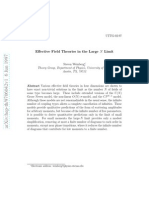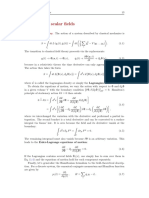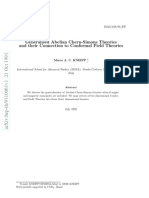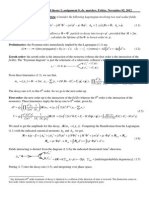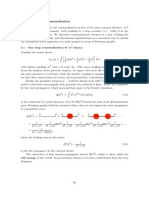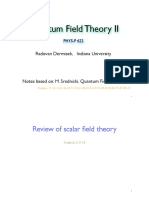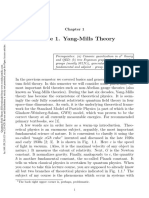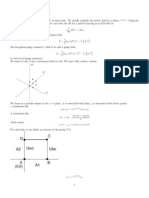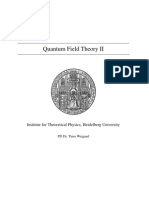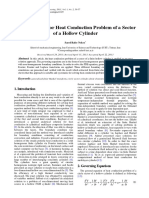0% found this document useful (0 votes)
37 views8 pagesAdvanced Quantum Field Theory
This document discusses the relationship between the generating functional W[J], the effective action Γ[φcl], and 1PI (one-particle irreducible) Green's functions.
It shows that the 1PI Green's functions Γ(N) are the fundamental Green's functions, as all other Green's functions can be constructed from them. Specifically, it derives that the two-point 1PI Green's function Γ(2) is equal to the inverse of the connected two-point Green's function, and the three-point 1PI Green's function Γ(3) is equal to the amputated three-point Green's function.
It also discusses how the effective action Γ[
Uploaded by
DAVIES TEMBOCopyright
© © All Rights Reserved
We take content rights seriously. If you suspect this is your content, claim it here.
Available Formats
Download as PDF, TXT or read online on Scribd
0% found this document useful (0 votes)
37 views8 pagesAdvanced Quantum Field Theory
This document discusses the relationship between the generating functional W[J], the effective action Γ[φcl], and 1PI (one-particle irreducible) Green's functions.
It shows that the 1PI Green's functions Γ(N) are the fundamental Green's functions, as all other Green's functions can be constructed from them. Specifically, it derives that the two-point 1PI Green's function Γ(2) is equal to the inverse of the connected two-point Green's function, and the three-point 1PI Green's function Γ(3) is equal to the amputated three-point Green's function.
It also discusses how the effective action Γ[
Uploaded by
DAVIES TEMBOCopyright
© © All Rights Reserved
We take content rights seriously. If you suspect this is your content, claim it here.
Available Formats
Download as PDF, TXT or read online on Scribd
/ 8

